Savile Row’s Master Tailors: Dege & Skinner’s Nicholas De’Ath and Emma Martin
By Something CuratedEstablished in 1865, Dege & Skinner is one of the few family-owned tailors still operating on London’s renowned Savile Row. With an illustrious history, dressing members of the Royal Family and the British military, Dege & Skinner’s bespoke clothing, uniforms and shirts are cut and made by hand at the tailor’s Savile Row premises. Holding three Royal Warrants, the company celebrated its 150th anniversary last year. Eager to gain insight into the workings of this historic business, Something Curated met up with Senior Bespoke Cutter Nicholas De’Ath and Coat Maker Emma Martin at Dege & Skinner’s West End workshops, to discuss the process of crafting a bespoke suit, what makes Savile Row so special, and what the future might hold for the famed London street.
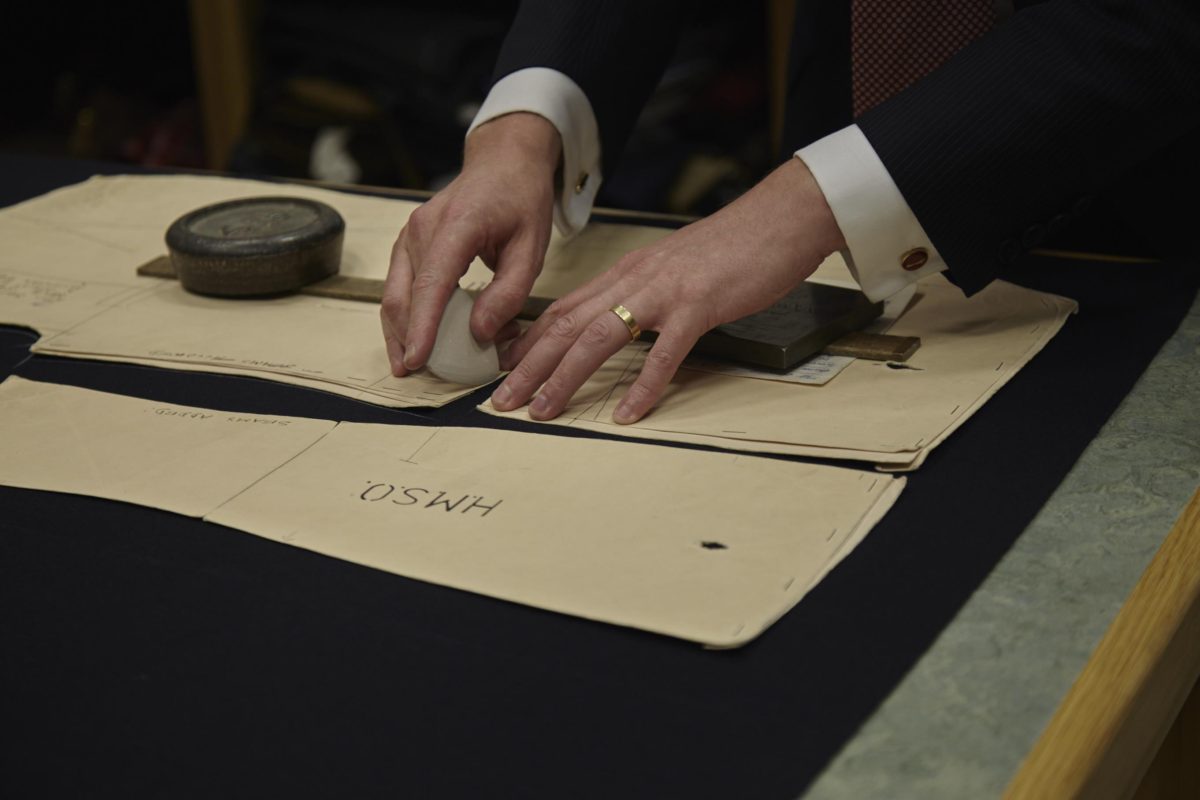
Something Curated: Could you tell us about what you do at Dege & Skinner?
Nicholas De’Ath: My job can start in various places. I’m known as a cutter, which means I construct the patterns and cut the cloth. It becomes my job to measure people, speak to them about fittings, configurations and stuff like that. From there, I construct a pattern.
Emma Martin: He also manages people, so he’ll manage me, for example. He’s a cutter and a manager in a sense. I’m a coat maker. I receive the tailoring bundle from Nicholas, which has got canvas, thread, buttons and cloth lining. I’ll make a baste for the first fitting, which means the garment is hand stitched together very loosely. Once Nicholas has done the fitting he can undo it easily. Then, he does his job and I receive it again and then make it.
SC: Could you tell us a bit about the company’s history?
ND: We started in 1865, so we’re 151 years old. The Skinner family, I think, are now fifth generation. We are still family owned, which is quite a nice thing.
SC: Are a lot of the tailors on Savile Row family owned?
ND: They used to be but not as much today.
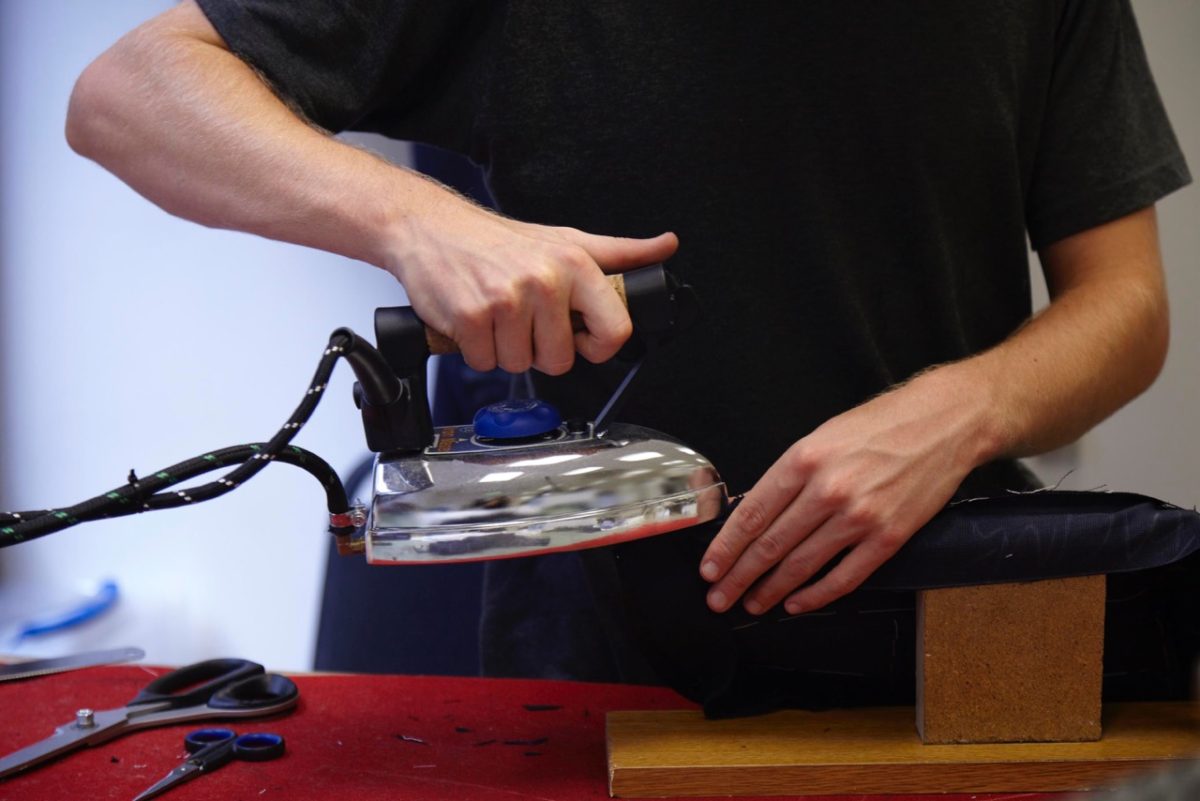
SC: Is there a particular ethos or style that you are noted for?
EM: We do have our style but our niche is military. That’s our speciality. Not everyone on Savile Row does this. It’s in our history. The first thing we did was military, and then went on to what we call mufti or civilian, which is customers from the street. We like to do a classic suit. We don’t want to make it too fashionable. We want a classic cut that’s going to suit every year. It’s going to be a suit that you buy when you’re 20, and you’re going to have when you’re 50. You can take it in and out.
ND: It is a small percentage, but the military side is a big part of the heritage. We are one of the only Savile Row tailors who still produce military garments that are used within the army. People will always assume we will make quite a structured, lofty coat or quite skirty and shapely, which we do and can, but also not everyone’s a cavalry officer who’s six foot tall. We cater to various people from different parts of the world who are shaped in different ways, so you find you have to do things in different ways. People are, as a whole, getting bigger anyway, so I think that’s the main thing I’m noticing that’s changing now.
SC: What advice would you give to someone who is considering purchasing a bespoke suit on Savile Row for the first time?
EM: For me, it’s not about the name; it’s more about the way it’s made. I can only explain to someone what you should look for in a suit to make sure it’s bespoke. Just the classic signs – it’s really easy you don’t have to have a special eye. If you lift your lapel and it’s got loads of puncture marks where the stitching is, you can see the more stitching, the more care the tailor is taking in your coat. With Dege & Skinner, it’s the high quality. From cloth choice to making to cutting, we set a high standard here.
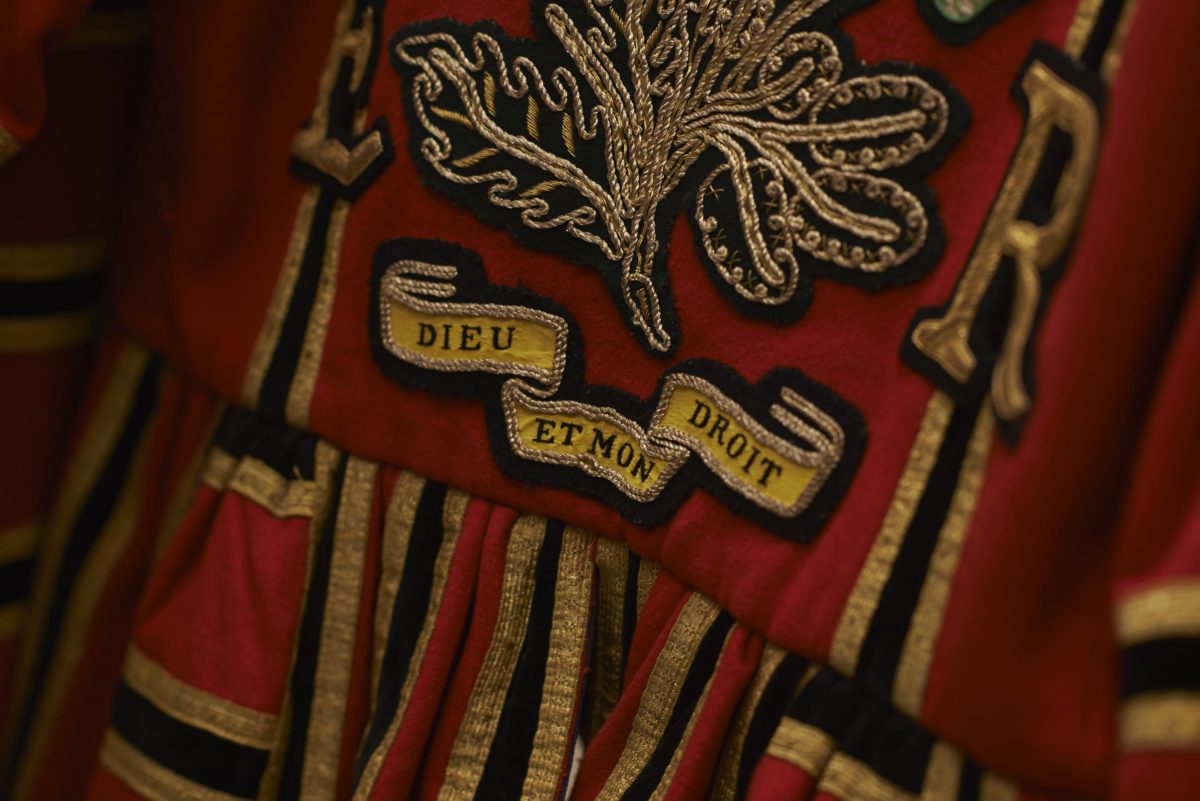
SC: Whose work are you inspired by?
EM: When I first started, it wasn’t really suits I was interested in; it was more how well clothes were made on Savile Row. I could look at a person in a beautiful suit and be like “Wow, they look great,” but it never really turned me on as a maker. I like to be a little more out there with my fashion. I’ve calmed down from working in this job because now I like the classic cuts. When I started working here, my tutor was Stefano, and he worked with Douglas Hayward in the 70’s. He was a massive inspiration for me. He was an Italian guy. He was in his 70’s when I was working with him and he was training me up. For me, it was more about how he worked and what he produced. He had this very calm kind of attitude. He made it so quickly, but he wasn’t rushing.
ND: My father’s a tailor. When I left college after Business Studies and everything else, I needed a job. I started shortening trousers and then went onto coats and carried on from there. It’s a difficult question because obviously I’ve been inspired by people, but more so, I think it’s easier to be impressed or inspired by the making side of things. The cut, yes is obviously very important, but you don’t necessarily get to see it initially. I can pick a well-made coat. I can say that’s cut really badly. It won’t fit anyone, but it can be made very well. It’s difficult to pinpoint someone as a peer of me but I can say I really appreciate people’s work.
SC: Why do you think Dege & Skinner have successfully run for so long, faced with growing competition and change in the industry?
EM: We do try to stay with the times. We don’t want to stay in one spot because we’re going to get left behind. One thing that is always going to keep us ahead of everything is our military. We hold the Royal Warrant for it. Apart from that, we’ve got things online. We’ve got things off the peg or ready to wear, which isn’t interfering with our bespoke. Our bespoke is always going to be our core business, but the time is fast and people want suits now. You have to have that to get a different type of customer in. We’ve got some really good customers that have been with us for years, some generations. Their kids, they’ve bought suits, and then their kids have bought suits from us.
SC: What makes a pure bespoke suit special, compared to semi-bespoke?
ND: ‘Semi-bespokes’ are a bit difficult. Made to measure or semi-bespoke, I don’t really know because many people will manipulate it to their advantage. Bespoke should be individually made for one particular customer. They’ll have their own unique pattern. For whatever question there is, like if their shoulders are different and this that or the other. That’s constructed as the process goes on. I think semi-bespoke is actually more about the finish more than anything else. I think semi-bespoke is more ready to wear but then they put a bit more hand work into it, like hand button holes and bits and pieces like that. I think it’s still made to measure, which is done with a block pattern, but might have the sleeves altered or something like that. They don’t take anything of your configurations into the consideration or the cut and patterns.
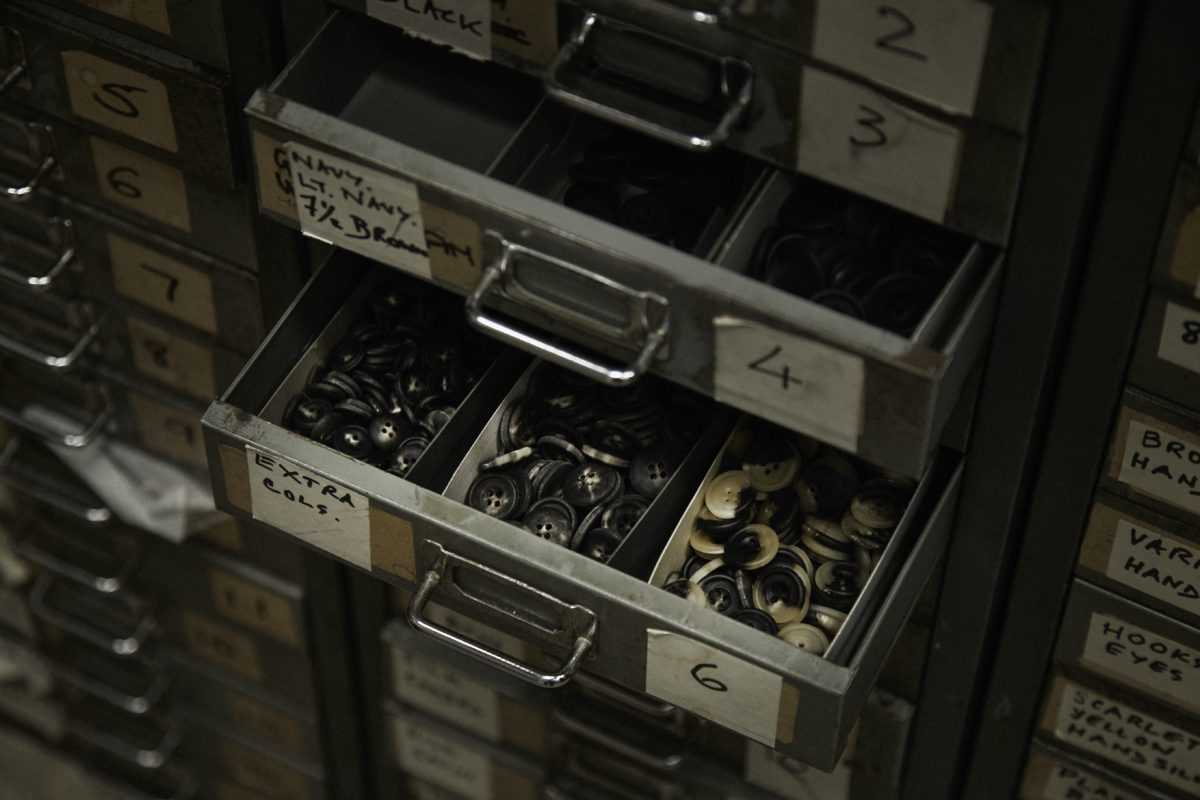
SC: Historically, your client base includes the aristocracy and military. Would you say there is a typical Dege & Skinner customer today?
EM: We have our Sandhurst boys, who are the guys who are at the Royal Military Academy Sandhurst. They range from royalty to people who have gone to university to be in the army. Army boys, they’re quite a light-hearted kind of people. We do get some suits back that look like there was some fun going on. They’re not lined, but we’ll fix them up. I’m also not sure how much I can tell you about our client base. We do have some very important clients. They order a lot from us. The thing with old school tailoring is some of it is word of mouth. If your Dad has a suit from here, you’re probably going to have a suit from here, or they’ll mention it to a friend at a gentleman’s club and then they’ll all get suits made too.
SC: Could you briefly guide us through the design and production process for one of your pure bespoke suits?
EM: I get my bundle. I make what is called a baste, which is for the first fitting. I give that to Nick. He fits it. I get it back. It would have been turned into a coat. He would have undone it all, laid it down and remarked the pattern on it. Let’s say the guy needed it taken in, we’ll take that off. Taken out we’ll put some more cloth on. We have what’s called inlay in our coats where you’d get a tiny little seam on something. With ready-to-wear, our coats will have an inlay of an inch and a half so you can let it out or let it in. That’s marked. I receive it back. Depending on the client, they might want some more fittings. I’ll put a facing on. We’ll baste it again together, have another fitting. I’ll receive it again and make it. That is then given to the finisher. She will do all the stitching in the lining and the button holes. Then to the presser and he presses it. I’ll do all the pockets and all the canvas and everything like that. The whole process is 55 hours from start to finish. My process is maybe 25 hours for a coat start to finish. We all make a section, so it’s not like someone sits there and does 55 hours.
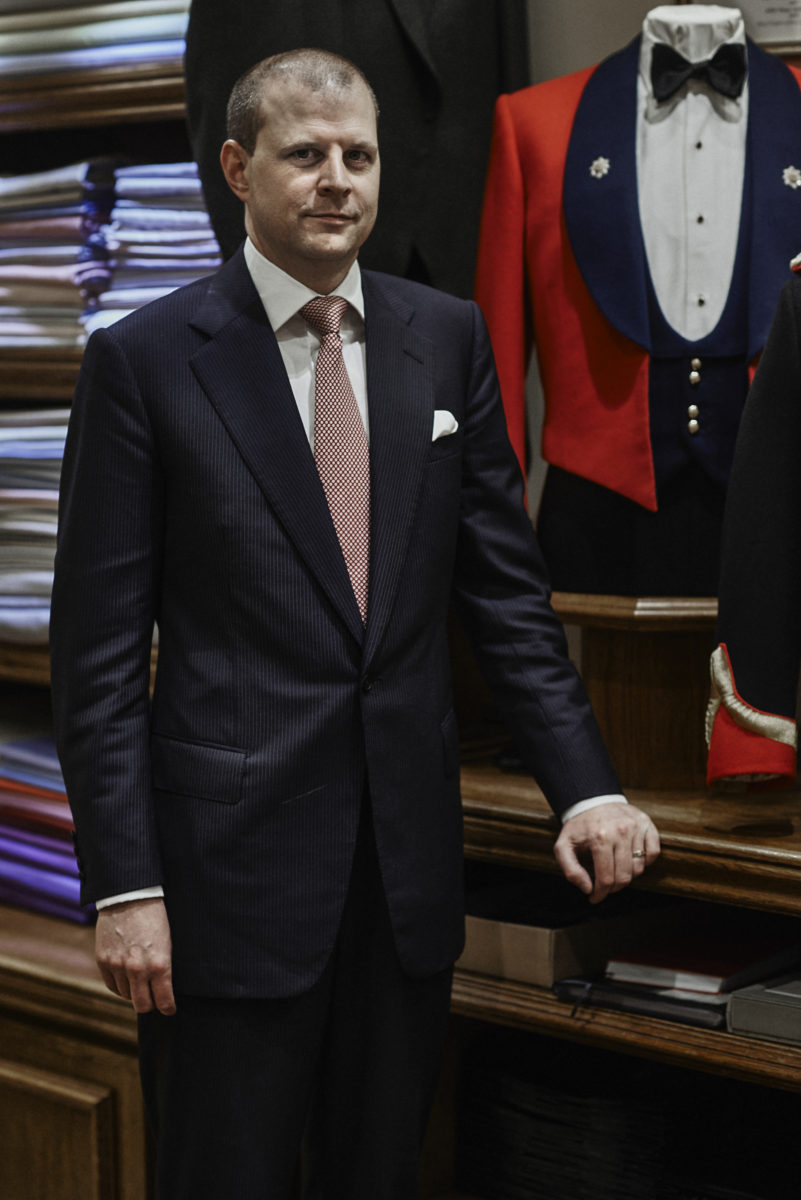
SC: Why do you think that Savile Row tailors are so well received in overseas markets?
EM: Because it’s Savile Row. It’s literally as simple as that. We’ve been going for hundreds of years. We’ve got history. Savile Row is older than most of the buildings in America. That’s got to be pretty exciting for someone in a younger country. You want to be part of someone who made Napoleon’s suit or who ever. You want to part of that kind of culture. It is a culture in its own right. It’s the classic move isn’t it? It’s the James Bond going down to Savile Row. We’re in films. We’re part of the history of bespoke tailoring. People want to be part of it. Wherever you are in the world, you know Savile Row. It’s the name.
ND: Obviously, it’s the quality. Also, I think we are quite approachable. We are a bit more personal. You can see it’s quite time consuming, but it’s nice when you get to know the people a lot better and understand what they like. It helps them when you’re looking at new stuff to say, “You had this the last time – do you want to try something a bit different or exactly the same?” I’ve said to people I’ve been introduced to that I’m not a salesman. I’m a practical person. Anything I make for someone is going to be to compliment their body and what they’re going to do with it rather than this is the fashion. At the end of the day, they get a nice product. It’s a big thing that actually still means something.
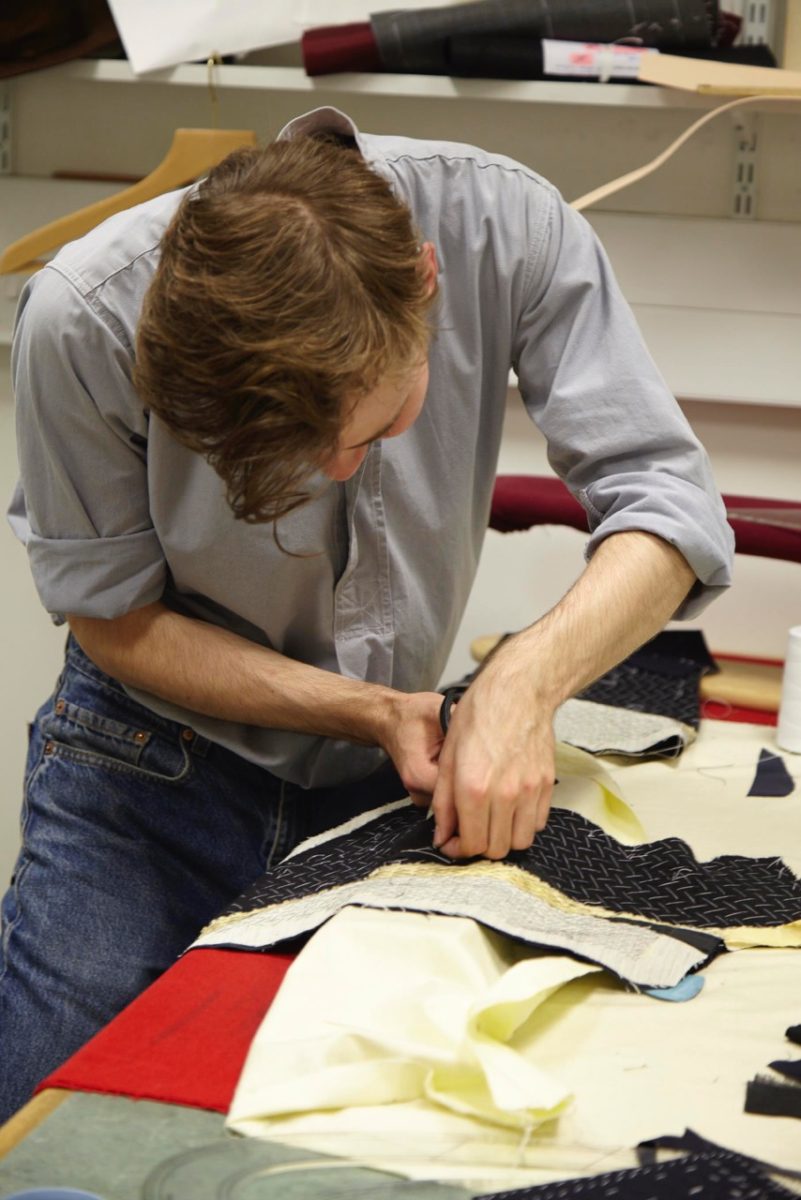
SC: How important is the quality of fabric in creating a bespoke suit and where do you source your fabrics from?
EM: We like to keep it as British as possible. A lot of our cloths will be made in England. You’ve got to keep in mind because of our weather, it’s very harsh, the wool on the sheep is going to be very tough, so you can’t make these beautiful soft materials. Apart from tweeds, we get a lot of our wool from Australia, but the cloth itself will be woven in England. Certain cloths have personalities. The higher quality the cloth, the less it’s going to work against me.
SC: How did you get into this industry? What was your journey?
ND: I actually started more on the coat making side of things. I’d done that for around four years, which is quite a long time. I was always interested in the other side of the business, the cutting side. Fortunately, after a short time in the city, I came back here into Savile Row at Dege and carried on with the cutting, which brought me back to square one, quite a way into my career to begin again. Now, I understand the construction side of things as well as the actual cutting. I don’t have as many skills, such as sewing, that I used to, but I can understand what people are doing and like to think I’m quite helpful in things like that.
EM: When I was a kid, I used to make clothes for my dolls. I remember getting my Dad to buy all these china dolls. It must have looked so freaky with this eight year old with china dolls in crazy clothes. I’ve always made stuff. I went to London College of Fashion. I worked for a few fashion houses here and there, but for me, it was like I couldn’t get my teeth into it. The lifestyle didn’t suit me. I wanted something that was mine and no one could touch. I felt that coming to Savile Row was the best place because who’s better than Savile Row at making beautiful clothes.
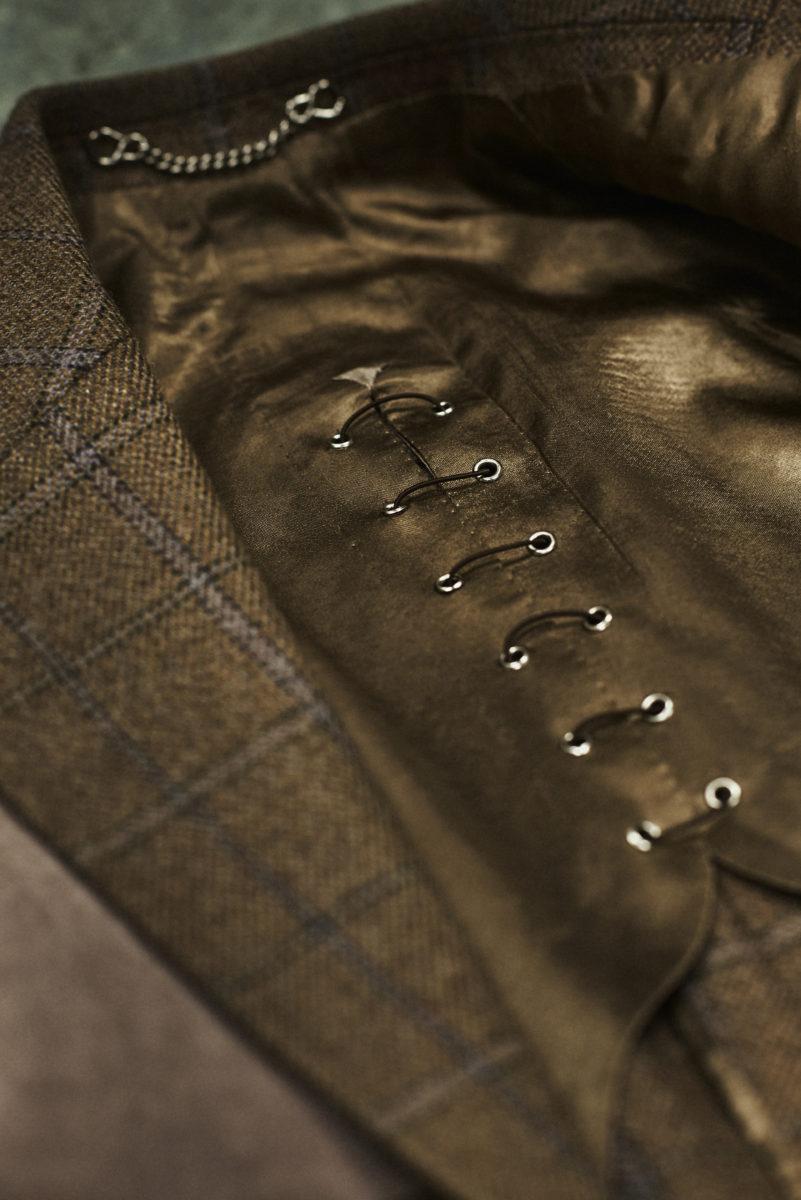
SC: What do you think London has offered you for a creative career?
ND: I don’t think, as a tailor, you could be anywhere else, certainly English tailors, but Savile Row. As a youngster coming into it, it’s where you want to be. It’s where you need to be to get it even if it is only for a couple of years on your CV. You can say, “Yes, I’ve been in Savile Row. I understand the process.”
EM: There’s only one Savile Row, so you have to be in London. For me, not just to be a tailor but to be a creative, the harshness of London is kind of a great juxtaposition. Once you’re in, it just makes it so much more exciting. If it was an easy life, you wouldn’t really appreciate what you have. The reason why I think London is great is because it’s got that little bit of dirty grunginess to it and that creates great fashion and great music. I’ve always said English people are pretty grumpy, but it creates the best humour. In the dirt, a beautiful thing can be created, and I think that’s what London is.
SC: How important is it for tailors to be based around Savile Row today, and how do you feel about encroaching mass-market retailers, for example the nearby Abercrombie & Fitch?
EM: At the end of the day, we want to stick to tailors of the highest standard because that’s what we do. We don’t want to let anyone in that’s going to lower our standard. In this day and age, people are trying to bring it back. They are trying to bring the standard back. Ten years ago, it wasn’t like that. They wanted the Abercrombie and Fitches and things like Primark. We don’t pay people enough in those kind of industries, and we don’t want that to happen on our Row. Even if it is tailoring, we don’t want it to be a step below our level. It’s upsetting for us. It’s also a shame for Savile Row. We’re trying to maintain the standards of what we make as bespoke clothing, and have made here on Savile Row for about two hundred years or so.
ND: Savile Row, as a whole, is a recognised brand worldwide. It isn’t about an individual company, so we need to keep that to a good standard. Otherwise, it only takes one company that isn’t particular and someone to have a bad experience to go, “Savile Row is not very good. They’re not what they used to be.” As a whole, Savile Row does work together to keep that kind of standard high and to train people. Within the company, it’s very important to be on Savile Row. It’s a recognised address. We’d like to keep the address. It means something still. We are very protective of it.
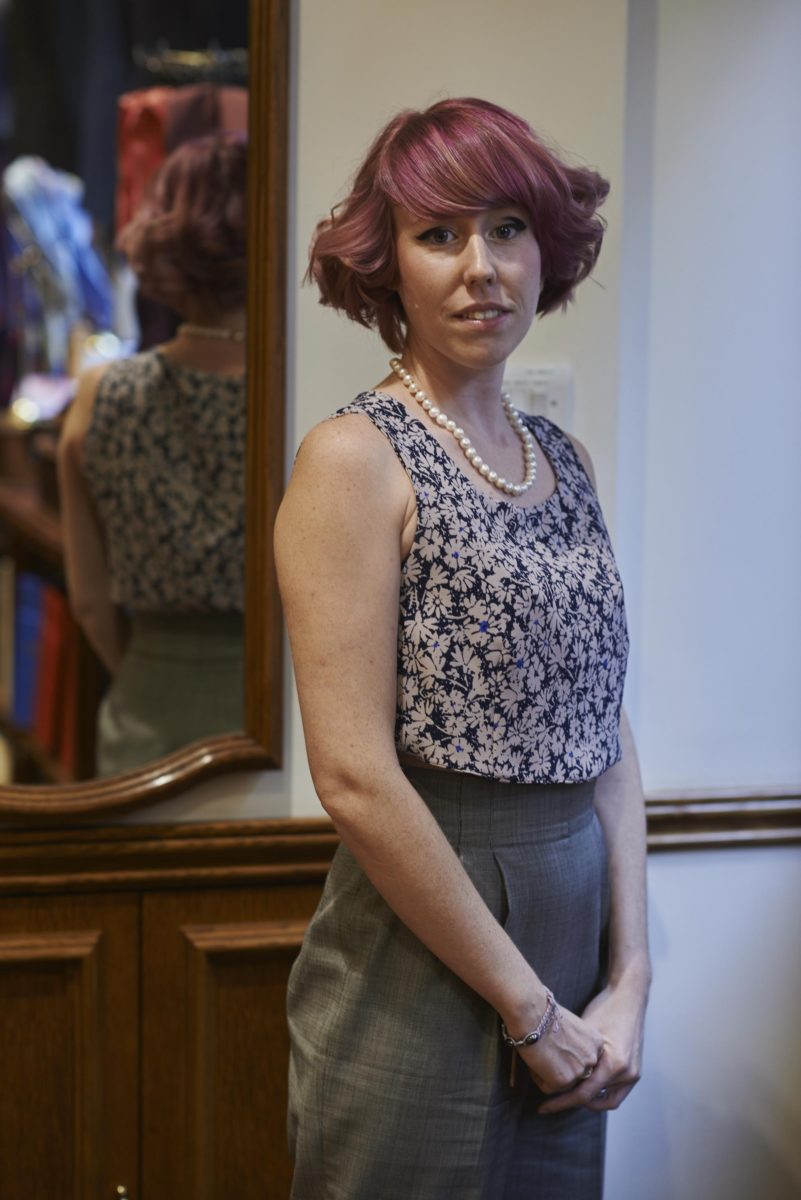
SC: What advice would you give to someone considering a career on Savile Row?
ND: It’s quite a difficult thing to get into because there are not that many shops. There are only so many people per year that any company’s going to want to take on. It is difficult. It’s no different in any other shop along here. It’s just a matter of being in the right place at the right time. The college courses are good, but they don’t do everything and you do need to learn a lot when you come here.
EM: First of all, I’d say, “Do you really want this?” because if you’ve got a bit of doubt in you, then you should probably not do it because at the end of the day, there are so many people that want to do it. It is a name that everyone knows. Half of it is luck. You could be an amazing, passionate kind of person, but you’ve got to not only fit in in the company, you’ve got to hope there’s space.
SC: Which area of London do you live and what drew you there?
EM: I’ve just come back from travelling. I did live in North quite a lot. London’s changed so much in the past decade. I lived in Manor House for quite a while, but that was when I started out. I lived in a warehouse because it was cheap and it was artistic and youthful. Now, like anywhere in London, there are lovely little shops and cafes.
ND: I live in Wanstead. I’ve lived there about 20 years. One of the reasons I first went there was because it was East London. Wanstead has changed a bit, but it’s always had a village kind of feel to it. There have always been small shops. They’re very protective of their high street there. Central London is around 45 minutes from my house, which is really handy.
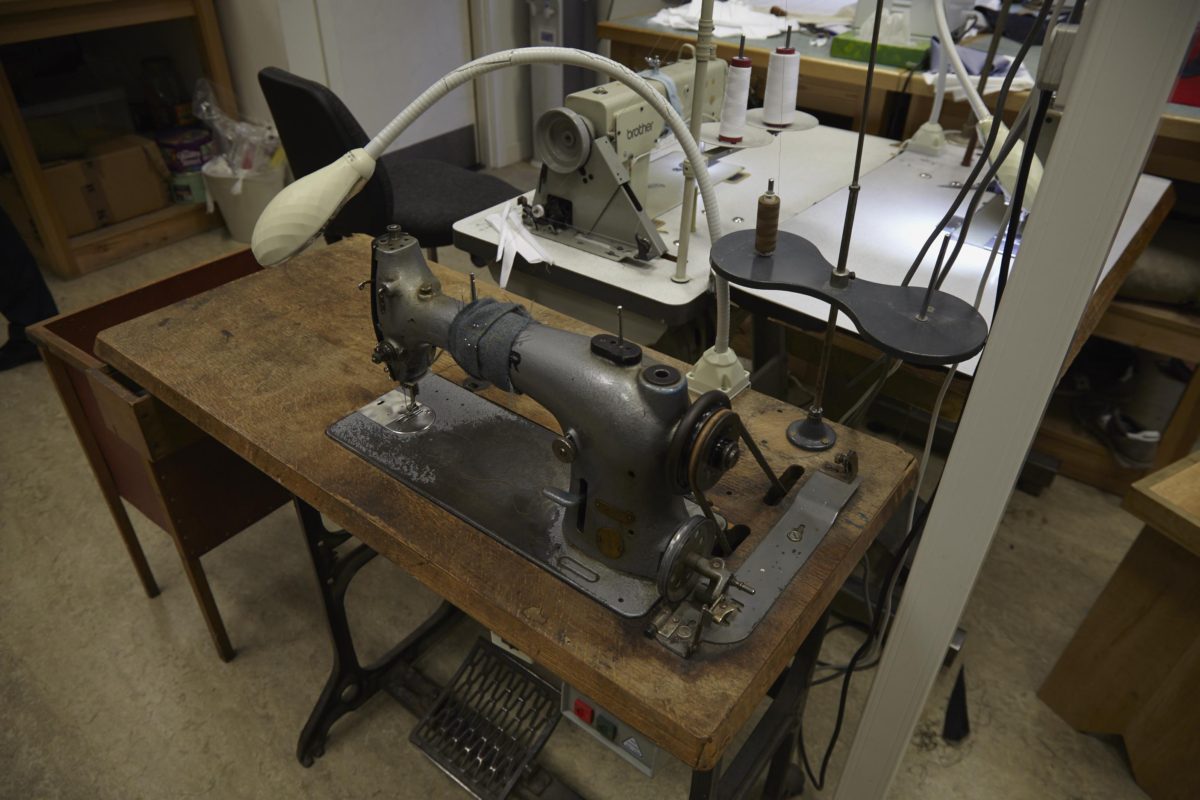
SC: Favourite place to relax?
ND: I have a three year old. I seem to spend a lot more time in my house, since I’ve had my daughter. When my wife worked, which she doesn’t do now, we’d both finish work at the same time. As lazy as it sounds, we used to look at each other and go, “Well, I’m not cooking,” and we would go out. Being in the West End it’s easy to get food. We’d spend evenings eating, going to a pub and now we don’t seem to get the time for it. Last week we actually made the effort, got a babysitter, and went out for a meal. It was actually pretty nice. Other than that, it’s probably my house.
EM: For me, it isn’t a place really. I suppose it’s what’s happening at the time. Obviously, London is amazing in the summer, and my favourite thing to do is go to a rooftop bar. My brother lives in Peckham now, and I lived nearby for a bit. I like Frank’s – it’s got a really great vibe.
SC: Favourite holiday destination or where would you live if not London?
EM: Anywhere in Asia. I really love it. I’m not a big lover of Australia but Melbourne is a cool city. I could definitely work there.
ND: I really like LA. The whole West Coast is very nice.
Photography by Clara Giaminardi